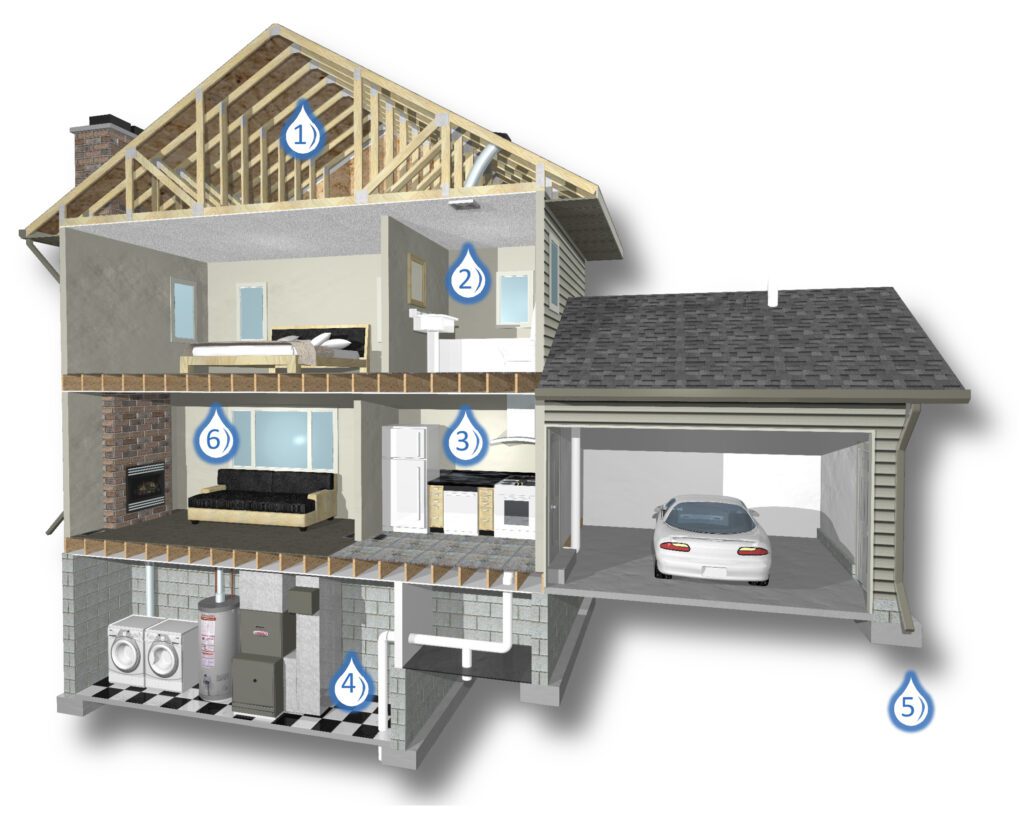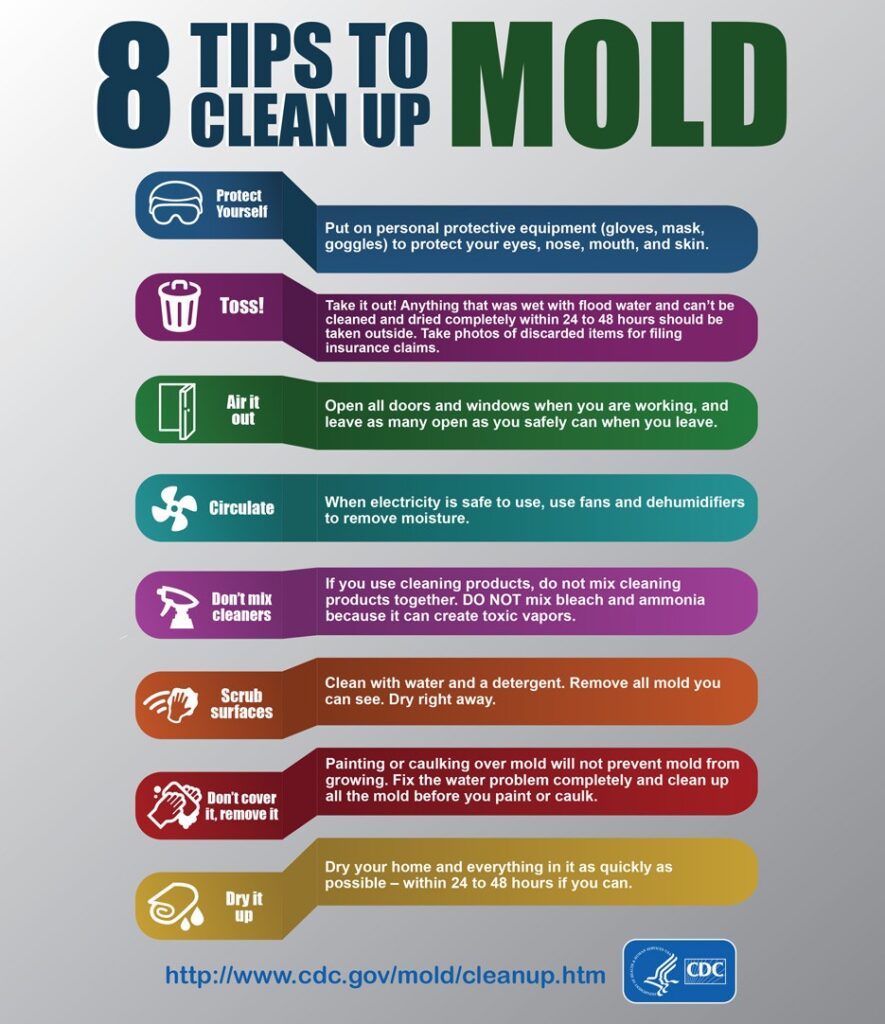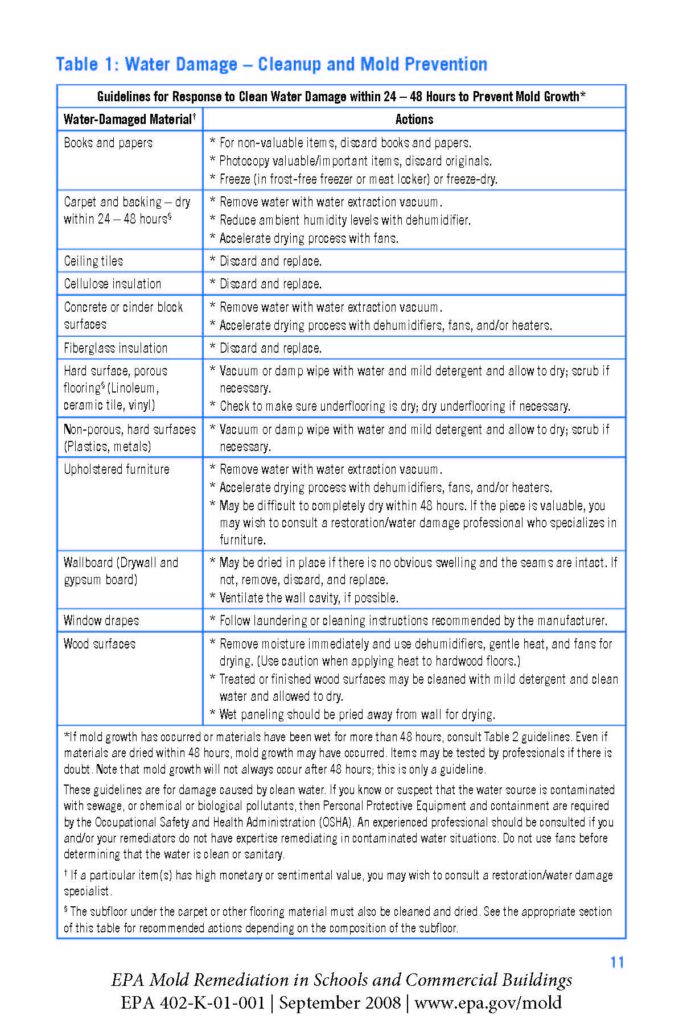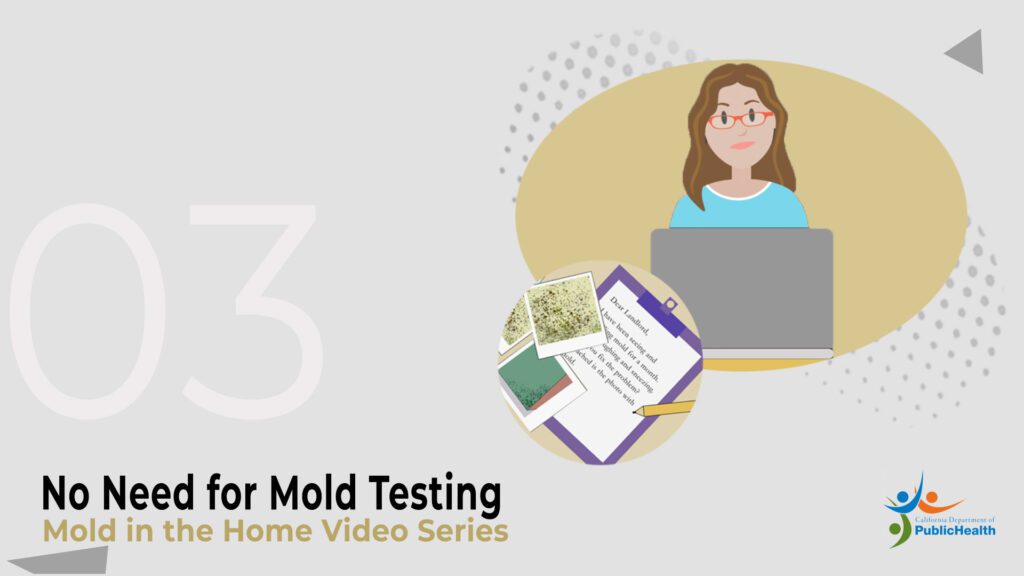Have you ever wondered about the importance of mold inspection for your overall health and well-being? Look no further! The Department of Health Mold Inspection is here to shed light on this crucial subject. Mold, if left untreated, can lead to various health issues, ranging from allergies and respiratory problems to even more severe conditions. By conducting thorough inspections, the Department of Health aims to identify and address mold-related concerns, ensuring a safe and healthy environment for all. Discover the significance of mold inspection and how it can positively impact your life in this captivating article.
Overview of Department of Health Mold Inspection
The Department of Health plays a crucial role in ensuring the safety and well-being of the public. One of their responsibilities is conducting mold inspections to identify potential health risks and ensure compliance with regulations. In this article, we will explore what mold is, why mold inspection is necessary, and the specific role played by the Department of Health in mold inspection.
What is Mold?
Mold is a type of fungus that thrives in damp and humid environments. It reproduces by producing spores that can spread through the air, making it easily accessible to inhale or come into contact with. Mold can grow on various surfaces such as walls, ceilings, carpets, and even furniture. It can present itself in a variety of colors and textures, making it easily identifiable.
Why is Mold Inspection Necessary?
Mold inspection is necessary for several reasons. Firstly, mold can cause a range of health issues, especially for individuals with allergies or respiratory problems. Secondly, mold can lead to property damage and decrease the value of a home or building. Lastly, mold can indicate the presence of underlying issues such as leaks or excessive moisture, which need to be addressed to prevent further mold growth.
Role of Department of Health in Mold Inspection
The Department of Health plays a significant role in mold inspection to protect public health and ensure compliance with regulations. They establish guidelines and regulations related to mold inspection and remediation. The department also approves qualified mold inspectors who have the necessary expertise and experience to assess and address mold issues. Additionally, they conduct inspections and audits to ensure that proper procedures are being followed and play an active role in raising public awareness about the dangers of mold exposure.
Health Risks Associated with Mold Exposure
Exposure to mold can lead to a variety of health risks. It is important to be aware of these risks in order to take appropriate measures if you suspect mold infestation in your home or workplace.
Respiratory Issues
One of the most common health risks associated with mold exposure is respiratory issues. Inhaling mold spores can irritate the respiratory system and cause symptoms such as coughing, wheezing, and shortness of breath. Individuals with pre-existing respiratory conditions, such as asthma or chronic obstructive pulmonary disease (COPD), may experience exacerbated symptoms.
Allergies
Mold allergies are another common health concern. For individuals with mold allergies, exposure to mold spores can trigger allergic reactions such as sneezing, runny nose, itchy eyes, and skin rashes. These symptoms can be particularly problematic for those who spend a significant amount of time in environments contaminated with mold.
Skin Irritation
Direct contact with mold can lead to skin irritation. The presence of mold on surfaces can cause redness, itchiness, and rashes on the skin. It is important to avoid touching mold directly and to seek medical attention if you experience any skin-related issues after coming into contact with mold.
Infections
In some cases, mold exposure can lead to infections. Certain types of mold, such as Aspergillus or Stachybotrys chartarum (also known as black mold), produce mycotoxins that can be harmful to the body. These mycotoxins can cause infections in the respiratory system, sinus cavities, or even in open wounds.
Toxic Effects
In addition to respiratory issues, allergies, skin irritation, and infections, mold exposure can also have toxic effects on the body. Prolonged exposure to high levels of certain molds and their mycotoxins can lead to more severe health problems, including neurological issues, organ damage, and even cancer. It is crucial to address mold infestations promptly to minimize the risk of these toxic effects.

Mold Inspection Procedures
Mold inspection involves a series of procedures to determine the presence, extent, and type of mold infestation. These procedures are performed by qualified mold inspectors, who are trained to identify and assess mold problems accurately. The following are the main procedures involved in a mold inspection:
Visual Inspection
A visual inspection is the first step in identifying potential mold growth. Inspectors thoroughly examine the building or property for visible signs of mold, such as discoloration, stains, or black spots. They also search for areas with excessive moisture or water damage, as these are ideal conditions for mold growth.
Moisture Testing
Moisture testing is essential in identifying areas with high moisture levels, as mold requires moisture to grow. Inspectors use specialized tools, such as moisture meters and thermal imaging cameras, to detect moisture sources and areas of excessive humidity. This helps pinpoint potential areas of mold growth that may not be immediately visible.
Air Sampling
Air sampling involves collecting samples of the air in different areas of the property to measure the concentration of mold spores. This helps determine the indoor air quality and whether there is an elevated level of mold spores present. Air samples are typically collected using a specialized pump and filter and are sent to a laboratory for analysis.
Surface Sampling
Surface sampling involves collecting samples from surfaces suspected to be contaminated with mold. Inspectors use swabs, tape lifts, or other collection methods to gather samples from visible mold growth or areas showing signs of mold. These samples are also sent to a laboratory for analysis to identify the type of mold present.
Bulk Sampling
Bulk sampling is necessary when a larger sample of a material or object suspected to be contaminated with mold needs to be collected. This method is commonly used for materials such as drywall, insulation, or carpeting. The sample is carefully collected and sealed in a container for laboratory analysis.
Mold Species Identification
Once the samples are collected, they are sent to a laboratory for analysis. The lab technicians identify the specific mold species present in the samples, which helps determine the potential health risks associated with the mold infestation. This information is crucial for developing an effective remediation plan.
Signs and Symptoms of Mold Infestation
Being aware of the signs and symptoms of mold infestation is important in identifying potential mold problems in your living or working environment. Here are some common signs and symptoms to look out for:
Visible Mold Growth
The most obvious sign of a mold infestation is the presence of visible mold growth. This can appear as spots, patches, or fuzzy growth on walls, ceilings, floors, or other surfaces. Different types of mold can have different colors and textures, ranging from green, black, or white.
Musty Odor
Mold often produces a distinct musty or earthy odor. If you notice an unpleasant smell that persists even after thorough cleaning and airing out of the area, it may indicate the presence of mold. This odor can be particularly noticeable in areas that are poorly ventilated or have a history of water damage.
Water Damage
Water damage, such as leaks or flooding, can create ideal conditions for mold growth. If you have experienced any form of water damage in your home or building, it is important to thoroughly inspect the affected areas for signs of mold. Stained or discolored walls, warped floors, or peeling wallpaper can all be indicators of past or ongoing water damage.
Allergic Reactions
If you or others in your household or workplace experience allergic reactions, such as sneezing, runny nose, congestion, or itchy eyes, that persist or worsen when you are indoors, it could be a sign of mold infestation. Mold spores can trigger allergic reactions in susceptible individuals, even if the mold is not directly visible.
Respiratory Issues
Mold exposure can cause or exacerbate respiratory issues. If you or others in your environment experience coughing, wheezing, shortness of breath, or other respiratory symptoms that seem to improve when you are away from the building, it could be a sign of mold-related respiratory problems.
Headaches
Headaches can sometimes be a symptom of mold exposure. If you consistently experience headaches while inside a particular building or area, it may be worth investigating for a potential mold infestation. However, it is important to note that headaches can be caused by various factors, so additional symptoms should be considered when assessing the likelihood of mold-related headaches.
Fatigue
Feeling unusually fatigued or experiencing low energy levels could be a result of mold exposure. Mold-related health issues can sometimes lead to chronic fatigue, which may persist even after adequate rest. If you notice a decrease in energy levels that cannot be explained by other factors, it may be worth considering mold as a possible cause.
Eye and Skin Irritation
Direct contact with mold or mold spores can cause irritation of the eyes and skin. If you notice redness, itching, or a rash on your skin or experience watery or itchy eyes, it may be a sign of mold exposure. It is important to avoid touching or coming into direct contact with mold, as it can exacerbate these symptoms.

Preparing for a Department of Health Mold Inspection
If you suspect a mold infestation in your home or workplace and have scheduled a Department of Health mold inspection, it is important to be prepared. Taking the following steps can help ensure a smooth and effective inspection:
Research Local Regulations and Guidelines
Before the inspection, familiarize yourself with local regulations and guidelines related to mold inspection. This will help you understand the requirements and expectations set by the Department of Health. It will also allow you to ask informed questions and better understand the inspection process.
Document Suspected Mold Areas
Create a record of any areas in your home or building that you suspect may have mold growth. Take photographs or videos to document the extent of the suspected mold. This documentation can be helpful during the inspection and will serve as evidence if remediation is required.
Notify Occupants/Residents
Inform all occupants or residents of the upcoming mold inspection. This will allow them to take necessary precautions, such as avoiding potential mold-contaminated areas or securing personal belongings.
Ensure Access to All Areas
Ensure that the mold inspector has access to all areas of your home or building. This includes rooms, crawl spaces, attics, basements, and any other spaces that may be affected by mold or conducive to its growth. Clear any blocked entrances, remove obstacles, and unlock doors or gates to facilitate the inspection.
Clear Clutter
Remove any unnecessary clutter or items that may obstruct the inspector’s view or access to potential mold growth areas. This will make the inspection process smoother and more efficient.
Provide Necessary Documentation
Gather any relevant documentation related to past water damage, previous mold inspections, or remediation efforts. This can include invoices, receipts, or reports that provide information about previous mold-related issues and their resolutions. Sharing this information with the mold inspector can help provide a comprehensive understanding of the mold history in the property.
Secure Pets
If you have pets, ensure they are safely secured or removed from the premises during the mold inspection. This will prevent any interference or accidents during the inspection process and ensure the safety of both the pets and the inspector.
Importance of Professional Mold Inspectors
When it comes to mold inspection, it is important to rely on the expertise and experience of professional mold inspectors. Here’s why professional mold inspectors are crucial:
Expertise and Experience
Professional mold inspectors have undergone extensive training and have expertise in mold identification, assessment, and remediation. They have the knowledge and skills necessary to accurately evaluate mold problems and recommend appropriate solutions.
Proper Identification and Assessment
Professional mold inspectors can accurately identify and assess the extent of a mold infestation. They are trained to differentiate between different types of mold and understand the potential health risks associated with specific species. This allows them to develop effective remediation plans tailored to the specific mold problem.
Use of Specialized Equipment
Professional mold inspectors have access to specialized equipment and tools that aid in the detection and assessment of mold. This equipment includes moisture meters, thermal imaging cameras, air samplers, and bulk sampling kits. The use of these tools enhances the inspector’s ability to identify hidden mold growth and to collect accurate samples for laboratory analysis.
Compliance with Health and Safety Standards
Professional mold inspectors are well-versed in health and safety standards related to mold inspection and remediation. They adhere to industry best practices to ensure that inspections are conducted safely and in compliance with regulations. This protects both the inspector and the occupants of the property.
Thorough Inspection Report Generation
Professional mold inspectors provide detailed inspection reports that summarize their findings and recommendations. These reports help property owners understand the extent of the mold problem, the potential risks involved, and the necessary remediation steps. The thoroughness and accuracy of these reports are essential in developing effective remediation plans and ensuring compliance with regulations.

Addressing Mold Infestation
If a mold infestation is detected during the inspection, prompt action is essential to prevent further damage and protect the health of occupants. Here are the steps involved in addressing mold infestation:
Remediation Process
The remediation process involves removing or treating the mold-contaminated materials and addressing the underlying moisture issues. Professional mold remediation companies employ various techniques to eliminate mold, such as physically removing affected materials, using antimicrobial treatments, or using specialized equipment like air scrubbers to remove mold spores from the air.
Preventive Measures
To prevent future mold growth, it is important to address the root causes of the mold infestation. This may involve fixing leaks, improving ventilation, or reducing humidity levels in the environment. Taking preventive measures helps create an environment that is less favorable for mold growth and minimizes the risk of future infestations.
Continuous Monitoring
Monitoring is crucial after mold remediation to ensure that the problem has been effectively addressed and that mold does not return. Regular inspections and monitoring of moisture levels can help detect any signs of potential mold growth early on, allowing for prompt action to be taken.
Proper Disposal of Mold-Contaminated Materials
During the remediation process, mold-contaminated materials may need to be disposed of. It is important to follow proper disposal procedures to prevent cross-contamination and ensure the safe removal of mold-infested materials. Local regulations and guidelines should be followed when disposing of mold-contaminated materials.
Dealing with Mold-Related Health Issues
If you or others in your household or workplace are experiencing health issues related to mold exposure, it is important to take appropriate measures to address these concerns. Here are some steps to consider:
Consulting with Medical Professionals
If you suspect that your health issues are related to mold exposure, consult with a medical professional. They can evaluate your symptoms, perform necessary tests, and provide guidance on treatment options. It is important to seek medical attention promptly to prevent further health complications.
Treating Mold-Induced Symptoms
Treatment for mold-induced symptoms depends on the specific health issues experienced. This can include medications to manage allergies or respiratory symptoms, topical treatments for skin irritations, or other interventions recommended by medical professionals. Following the prescribed treatment plan is crucial for symptom relief and overall well-being.
Improving Indoor Air Quality
Improving indoor air quality can help reduce the risk of mold-related health issues. Proper ventilation, regular cleaning of air ducts and filters, and use of air purifiers or dehumidifiers can help maintain a healthy indoor environment. It is important to address any sources of excessive moisture or water damage promptly to prevent mold growth.
Reducing Moisture and Humidity
Mold thrives in environments with high moisture and humidity levels. Taking steps to reduce moisture and humidity in your home or workplace can help prevent mold growth. This can include fixing leaks, using exhaust fans in bathrooms and kitchens, and ensuring proper drainage around the building.
Proper Cleaning and Maintenance Practices
Regular cleaning and maintenance are essential in preventing mold growth. Clean and dry any areas prone to moisture, such as bathrooms, kitchens, and basements. Regularly check for signs of leaks or water damage and address them promptly. Proper cleaning practices can help remove potential mold spores and minimize the risk of mold growth.

Roles and Responsibilities of the Department of Health
The Department of Health has several important roles and responsibilities related to mold inspection and remediation. These include:
Setting Guidelines and Regulations
The Department of Health establishes guidelines and regulations governing mold inspection, remediation, and related practices. These guidelines ensure that mold inspection and remediation are carried out in a safe and effective manner, minimizing health risks to the public.
Approving Qualified Mold Inspectors
The Department of Health approves qualified mold inspectors who have met specific criteria regarding training, experience, and knowledge of industry best practices. This approval process ensures that individuals conducting mold inspections have the necessary expertise to accurately assess and address mold issues.
Conducting Inspections and Audits
The Department of Health conducts inspections and audits to ensure that mold inspections and remediation are performed in compliance with regulations and guidelines. These inspections help identify any non-compliance issues and ensure that the health of the public is protected.
Providing Public Awareness and Education
The Department of Health plays a vital role in raising public awareness about the dangers of mold exposure and the importance of mold inspection and remediation. They provide educational resources and materials to help the public understand the risks associated with mold and take appropriate measures to address mold issues in their homes or workplaces.
Collaborating with Other Agencies and Organizations
The Department of Health collaborates with other agencies and organizations involved in mold inspection and remediation. They work together to share expertise, coordinate efforts, and develop strategies to effectively address mold-related issues in the community.
Conclusion
In conclusion, mold inspection is a critical aspect of maintaining a safe and healthy living or working environment. The Department of Health plays a vital role in ensuring that mold inspections are conducted properly and in compliance with regulations. By understanding the risks associated with mold exposure, being aware of the signs and symptoms of mold infestation, and taking appropriate measures to address mold-related issues, we can protect ourselves and those around us from the potential health hazards of mold.
